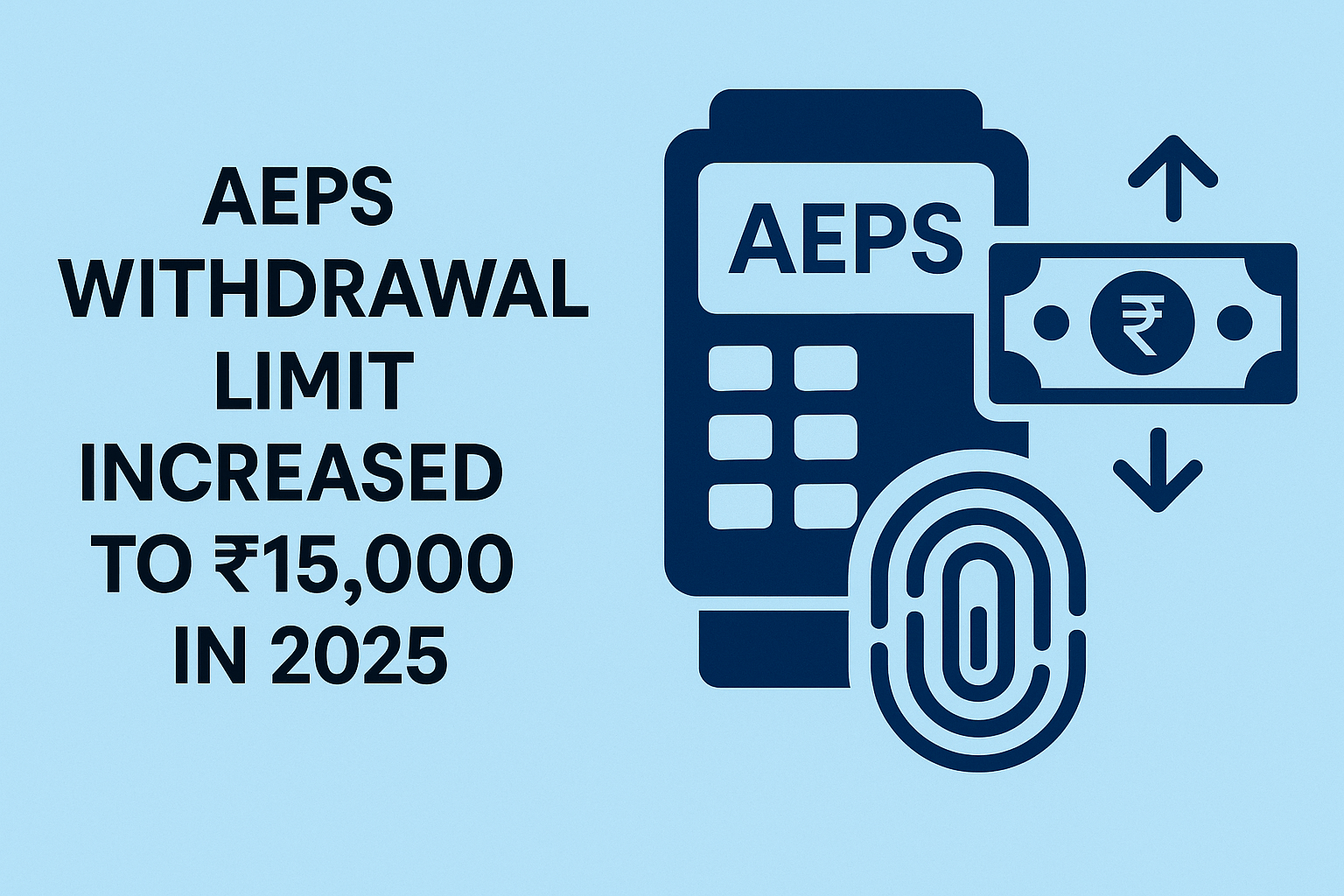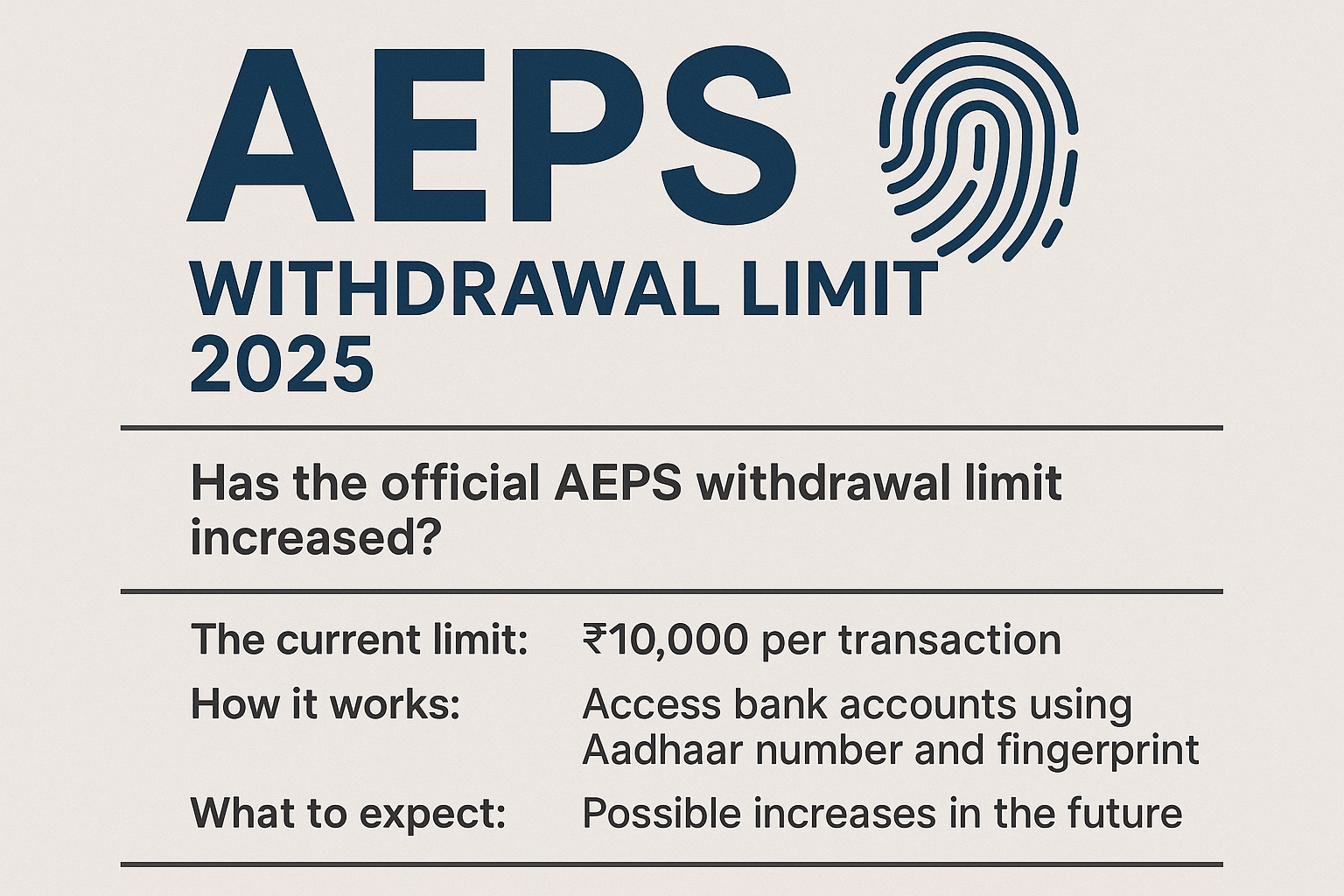In the vast landscape of Indian digital banking, the AEPS withdrawal limit is a critical piece of information for millions. The Aadhaar Enabled Payment System (AEPS) is a backbone of financial inclusion, allowing users to access their bank accounts with just their Aadhaar number and fingerprint authentication. As we look ahead to 2025, a common question arises: has the official AEPS withdrawal limit been increased? This comprehensive guide will demystify the current limits, explain how they work, and explore what users can potentially expect.
What Exactly is AEPS?
Before diving into the limits, let’s quickly understand what AEPS is. Imagine you need to withdraw cash or check your bank balance, but you don’t have your debit card, phone, or even a chequebook. With AEPS, you don’t need any of that. You simply visit a nearby banking correspondent (a micro-ATM point, often at a local shop), provide your 12-digit Aadhaar number, select your bank, and verify your identity with your fingerprint.
This system is revolutionary for rural areas and for individuals who are not comfortable with complex digital apps. It leverages the unique Aadhaar database to facilitate interoperable banking transactions across different banks.
The Official AEPS Transaction Limits (As of 2024)
It is crucial to understand that the AEPS withdrawal limit is not arbitrarily set by a single entity. It is governed by the National Payments Corporation of India (NPCI), which lays down the framework, but individual banks have the autonomy to set their own caps within that framework.
As we move through 2024 and into 2025, the standard NPCI-mandated limit for AEPS cash withdrawals remains ₹10,000 per transaction. However, this is just the starting point. The actual limit you experience is determined by two key factors:
-
Your Bank’s Policy: Each bank sets its own daily cumulative limit for AEPS transactions. Most major public and private sector banks have set this daily limit at ₹10,000. This means you can typically make multiple transactions in a day until you reach this ₹10,000 ceiling.
-
The CSP’s Limits: The Customer Service Point (CSP) or the banking agent you visit might also have their own operational limits based on the cash they have on hand. An agent in a remote village may only have ₹5,000 available, effectively capping your withdrawal at that amount, even if your bank allows more.
Breaking Down the AEPS Limits
Here’s a quick overview of the standard transaction limits for different AEPS services:
| Transaction Type | NPCI Guideline (Per Transaction) | Typical Daily Limit (Set by Banks) |
|---|---|---|
| Cash Withdrawal | ₹10,000 | ₹10,000 (cumulative) |
| Cash Deposit | ₹10,000 | ₹10,000 (cumulative) |
| Balance Inquiry | N/A | Usually unlimited |
| Mini Statement | N/A | Usually a limit of 5-10 requests per day |
Source: National Payments Corporation of India (NPCI) AEPS framework

Will the AEPS Withdrawal Limit Change in 2025?
As of now, there has been no official announcement from the NPCI or the Reserve Bank of India (RBI) regarding an increase to the AEPS withdrawal limit for 2025.
The current limit of ₹10,000 per day has been stable for several years. It strikes a balance between:
-
User Convenience: Providing adequate cash for daily needs.
-
Security: Minimizing risk in case of fingerprint duplication or fraud.
-
Agent Liquidity: Ensuring CSPs are not required to hold excessively large amounts of cash, which could be a security risk for them.
Any change to this limit would be a significant policy decision, likely driven by broader economic factors, inflation rates, and the government’s push towards digital literacy. If such a change is proposed, it will be widely publicized by the NPCI and major news outlets.
How to Check Your Personal AEPS Limit
Since your bank defines your specific limit, the best way to know your exact cap is to:
-
Contact Your Bank: Call your bank’s customer care helpline and ask for the daily transaction limit for AEPS.
-
Check Your Net Banking Portal: Some banks display transaction limits in the “settings” or “profile” section of their net banking website.
-
Visit a Branch: Inquire directly at your home branch for the most accurate information.

Tips for Managing Within the AEPS Limit
The ₹10,000 limit can be restrictive for certain needs. Here’s how you can work around it:
-
Plan Ahead: For larger expenses, plan your withdrawals over multiple days if necessary.
-
Use Other Channels: For amounts exceeding ₹10,000, consider using your debit card at an ATM or doing a digital transfer to someone who can pay you in cash.
-
Link Aadhaar to Multiple Banks? While you can use AEPS for any bank account linked to your Aadhaar, the daily limit is per bank. If you have accounts with two different banks, you could theoretically withdraw ₹10,000 from each, provided you can find a CSP that supports both banks.
The Future of AEPS
While the AEPS withdrawal limit itself may not change soon, the ecosystem around it is evolving. The NPCI is continuously working on enhancing security and adding new features. We can expect a stronger focus on:
-
Enhanced Security: Advanced biometric authentication to prevent fraud.
-
New Services: Integration of more services like bill payments, insurance, and pension disbursements through the same platform.
-
Interoperability: Making it even easier to transact across any bank at any CSP point seamlessly.
Conclusion
The AEPS withdrawal limit for 2025 is expected to remain at the standard cap of ₹10,000 per day per bank account, as set by individual banks under NPCI guidelines. This system remains a cornerstone of India’s financial infrastructure, empowering millions with basic banking services. While the limit may seem low to some, it is a carefully considered figure that prioritizes security and widespread accessibility. The key to using AEPS effectively is to understand your own bank’s specific policies and plan your financial transactions accordingly.
Always remember to keep your Aadhaar number confidential and only use AEPS services at authorized and trusted customer service points to ensure the security of your hard-earned money.
Frequently Asked Questions (FAQs)
1. Can I increase my AEPS withdrawal limit?
No, the AEPS limit is set by your bank and is generally standardized across all customers for security reasons. It is not customizable like some credit card limits.
2. Is there a charge for using AEPS?
For customers, AEPS transactions are usually free of charge. The bank pays a small interchange fee to the CSP, which is how the agent earns a commission. However, always confirm with the agent beforehand.
3. What happens if I try to withdraw more than my daily limit?
The transaction will be declined at the micro-ATM. You will receive an error message indicating that you have exceeded the permissible limit.
4. Is the AEPS limit the same for all banks?
The NPCI sets a guideline (₹10,000 per transaction), but the daily cumulative limit can vary slightly from bank to bank. Most large banks stick to ₹10,000 per day, but some smaller banks or payment banks might have different caps.
5. Can I use AEPS without linking my Aadhaar with my bank account?
No, your bank account must be linked with your Aadhaar number for the AEPS service to work. This linkage is what allows the system to authenticate you and access your account details.
Disclaimer: This article is for educational and informational purposes only. The information provided regarding the AEPS withdrawal limit is based on publicly available guidelines from the NPCI and standard banking practices as of the date of writing. These limits are subject to change by the NPCI, RBI, or individual banks. We make no representation or warranty of any kind, express or implied, regarding the accuracy, adequacy, or completeness of this information. Readers are advised to contact their respective banks for the most current and specific information pertaining to their accounts. If you have any concerns about the content of this post, please visit our DMCA page for guidance on content removal and ownership issues.
